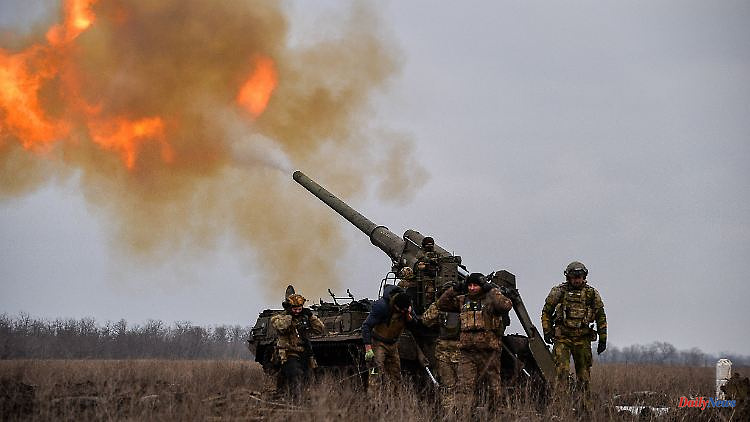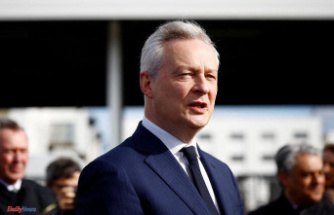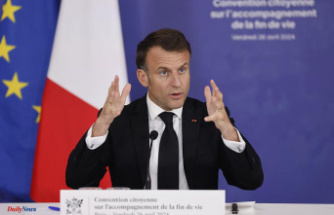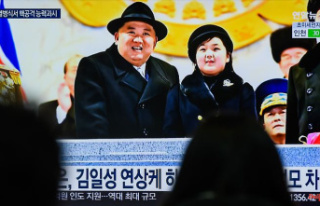Warnings have been piling up for weeks, whether from Kiev, from the NATO Secretary General or from German politicians: Ukraine is running out of ammunition. However, their replenishment is likely to be almost more important than new types of weapons such as fighter jets.
Immediately after Chancellor Olaf Scholz announced that German Leopard 2 tanks were to roll into Ukraine, Andriy Melnyk spoke up. On Twitter, the Ukrainian Deputy Foreign Minister demanded that combat aircraft, submarines and warships should now also be delivered. And indeed, there is serious discussion about handing over the US model F16 to Ukraine. But perhaps the country needs something else even more urgently: ammunition.
Because the consumption is enormous. Last November, a US official estimated that the Russians fired around 20,000 artillery shells a day. Among the Ukrainians it is 4,000 to 7,000. Because of the looming shortage, these numbers have now fallen, but NATO Secretary General Jens Stoltenberg warned this week: "Ukraine's current frequency of ammunition consumption is many times higher than our current production rate."
"We see no signs that President Putin is preparing for peace," said the Norwegian in Brussels on Tuesday. "He is preparing for more war, for new offensives and new attacks." That is why arms aid for Ukraine is now particularly important. "But it's also extremely important to ensure that any systems already delivered are working as they should." In addition to ammunition, he also meant maintenance and repairs.
German politicians have also recognized the problem. Defense Minister Boris Pistorius appealed to the German arms industry to increase production because of the war in Ukraine. "I can only warmly ask the armaments industry to ramp up all capacities as quickly as possible," he said this week. This will also be crucial in the coming months for aid to Ukraine. An end to the war is not expected anytime soon. At the beginning of February, the "Süddeutsche Zeitung" quoted a brigadier general from the Ministry of Defense as saying: "Ammunition is and will remain the decisive issue - and will be for a long time."
FDP defense politician Marcus Faber points out that with the upcoming Russian offensive, ammunition consumption will increase sharply on both sides. "Hundreds of thousands will come to murder, and everyone will be better persuaded to return home with a grenade," he told ntv.de. Ukraine now needs missiles like the PAC-2 for air defense and 155mm caliber artillery ammunition. CDU defense expert Hennig Otte even called for a supplementary budget on Südwestrundfunk to finance ammunition for Ukraine. The special fund of over 100 billion euros is not enough for this.
The problem with ammunition is that Russia has the upper hand. Because even if the Ukrainians use partially superior Western artillery such as the German Panzerhaubitze 2000 or the HIMARS rocket launchers, they continue to fire mainly with old Soviet cannons at the Russians. However, the Kremlin has long since destroyed Ukrainian arms factories, so that the Ukrainians cannot produce supplies themselves. In war it is important to have control over the ammunition depots. The second source of old Soviet ammunition for Ukraine is the other former Eastern Bloc countries such as Poland, the Baltic States or the Czech Republic. But even there the supplies are coming to an end.
In Romania and Bulgaria there are still plants that could produce such ammunition, said the Russian historian and journalist Nikolay Mitrokhin ntv.de. But the quantities were not sufficient. According to him, Ukraine is building a plant in an Eastern European NATO country. The high consumption of ammunition is also causing problems for Russia, according to Mitrokhin, the Kremlin is using significantly fewer rockets. But at least the country can reproduce undisturbed.
The West has started to react to feared shortages in Ukraine. This Wednesday, the United States commissioned two armaments companies to produce artillery ammunition for Ukraine for the equivalent of more than 486 million euros. The first delivery is scheduled for next month.
For Germany, Pistorius announced that ammunition for the Gepard anti-aircraft tank would also be produced in Germany in the future. 300,000 shots are to be produced and delivered from July. 32 of the models discarded by the Bundeswehr have been in use in Ukraine since the middle of last year. Ammunition was a problem from the start. Germany supplied just 6000 shots with the 32 tanks. The Ministry of Defense tried to buy more ammunition from other countries. This was not successful everywhere: Switzerland, for example, refused to export ammunition manufactured there.
Most recently, Brazilian President Ignacio Lula da Silva gave the thumbs-up. This not only referred to the Brazilian cheetahs, but to all ammunition - including that for the Leopard 1 main battle tank, which is also to be exported to Ukraine. Since the model is no longer built, there are only old ammunition stocks, including in Brazil. A similar problem as with the cheetah threatens here.
However, producing and supplying more ammo is just one way to deal with the shortage. Britain, for example, is training Ukrainian soldiers to fight with less ammunition. "Ukraine uses huge amounts of ammunition to defend itself," Secretary of Defense Ben Wallace told Times Radio. "That's one of the reasons we teach them to fight the western way." The Russian or Soviet way of fighting is very "ammunition-heavy" with massive artillery bombardments. "That's not how we organized ourselves to fight in NATO."












